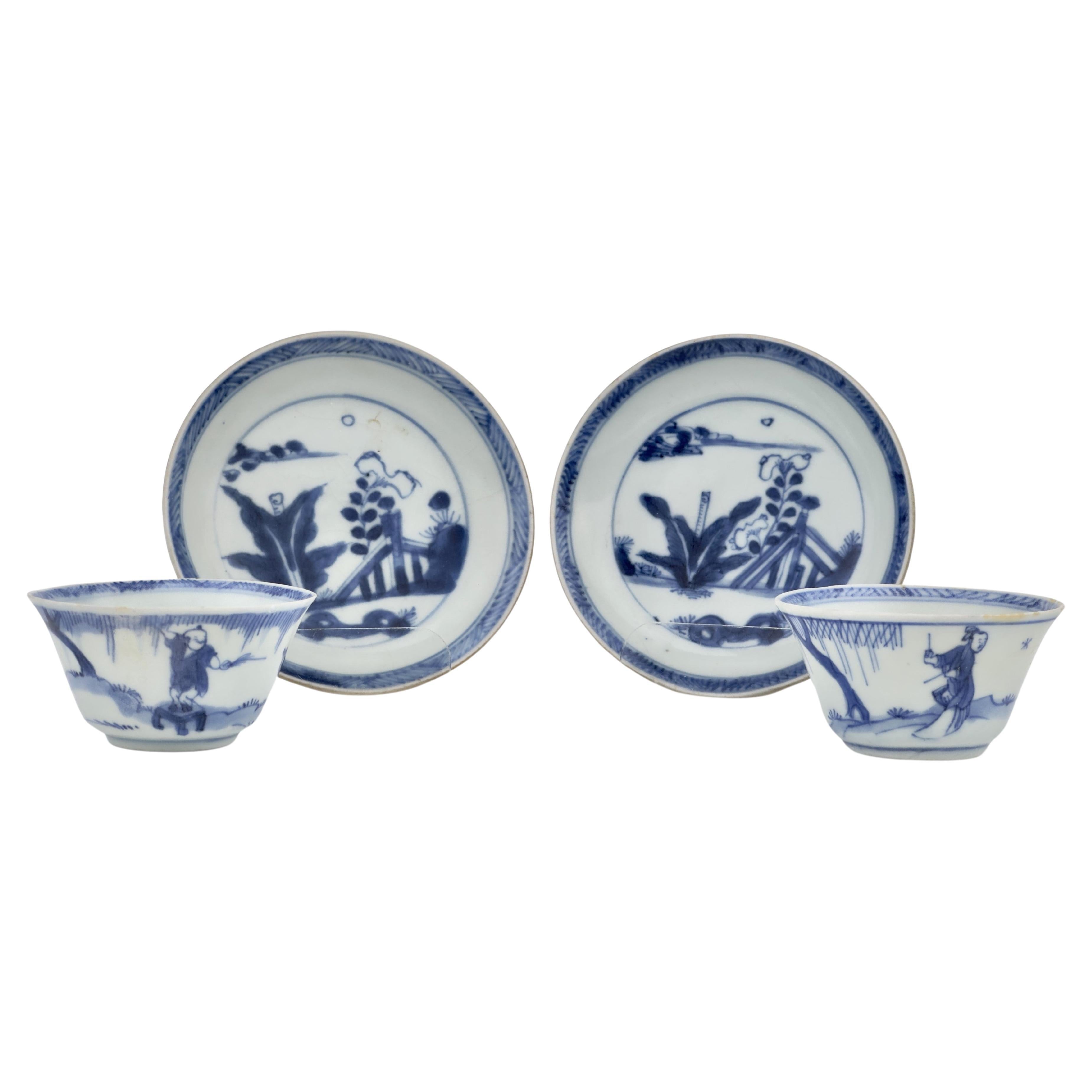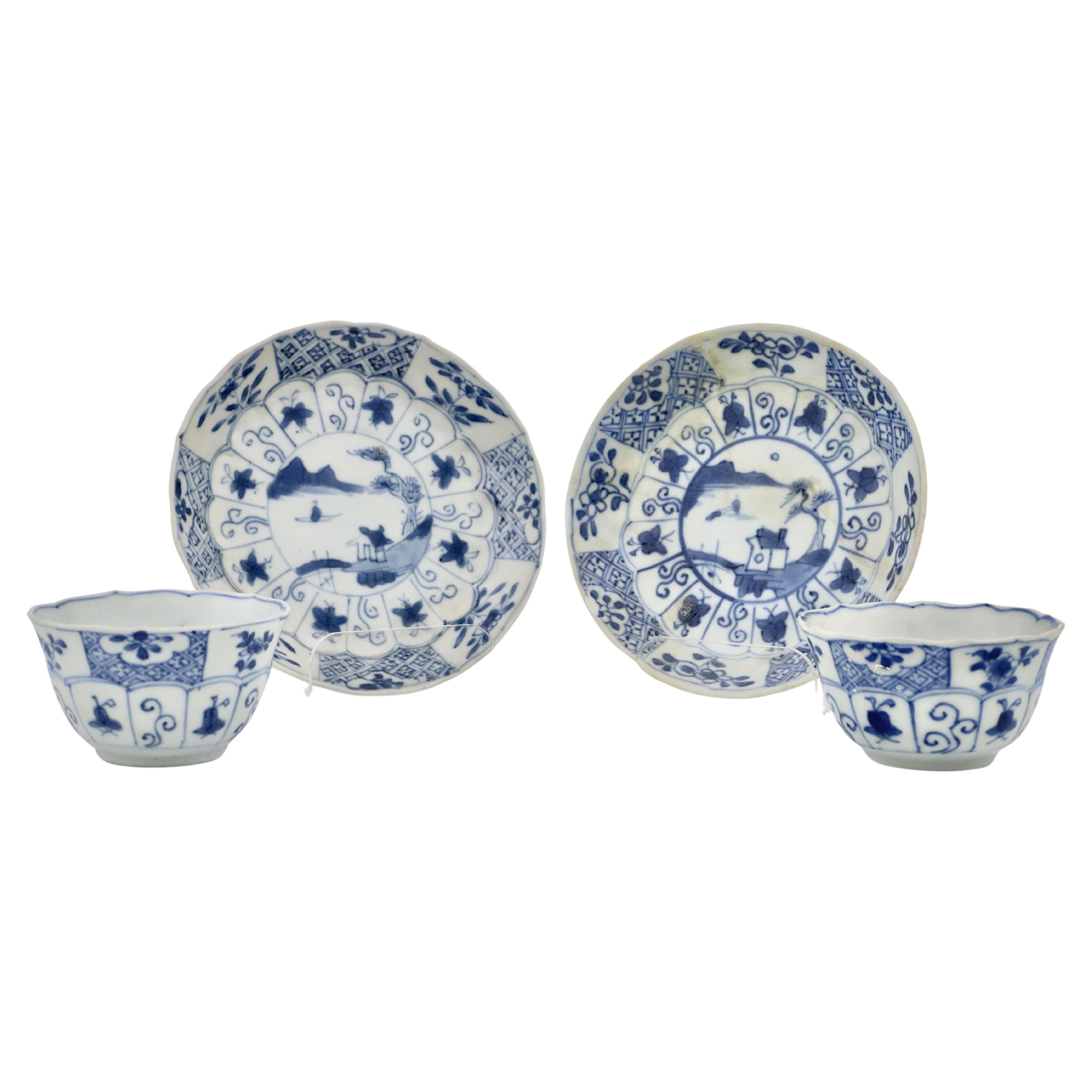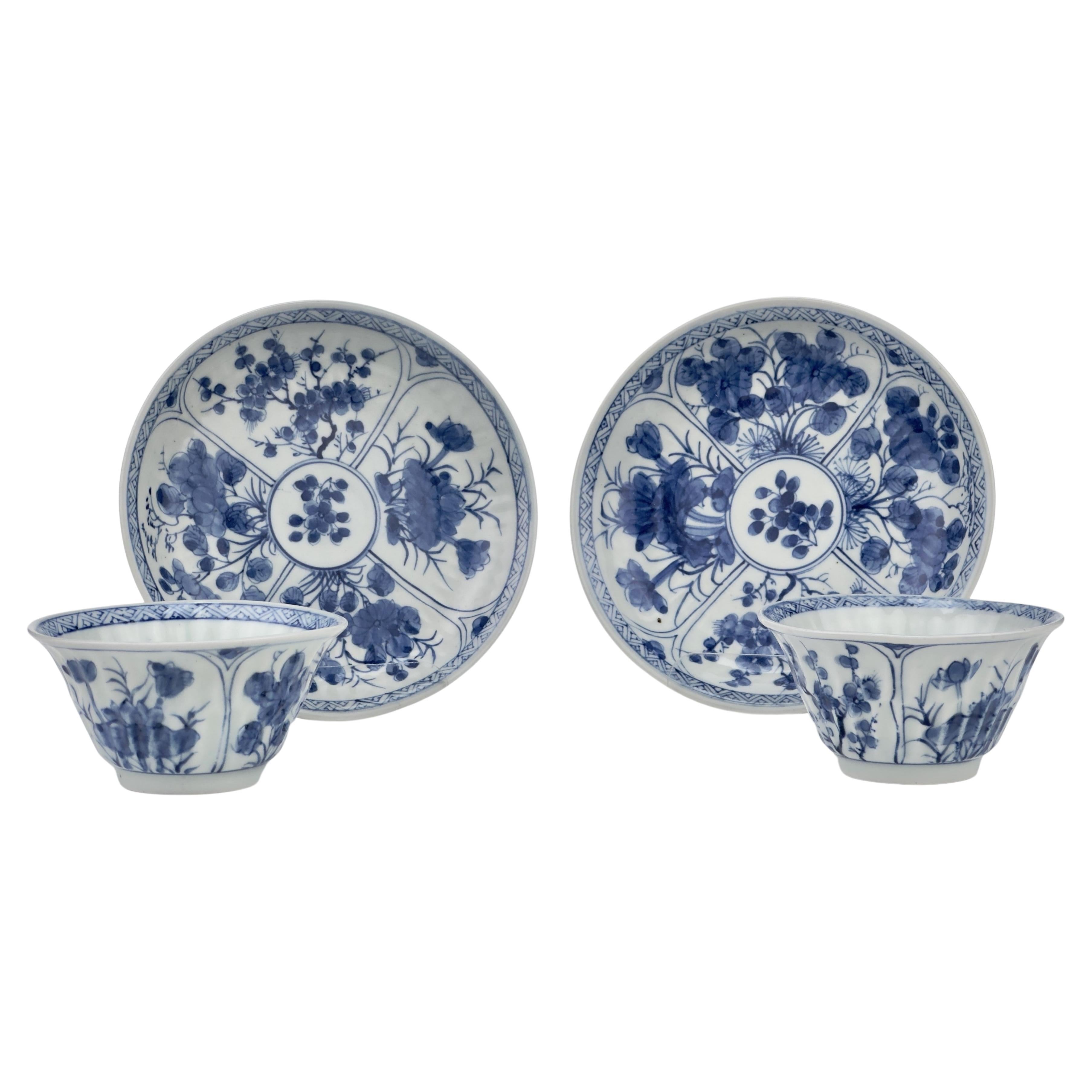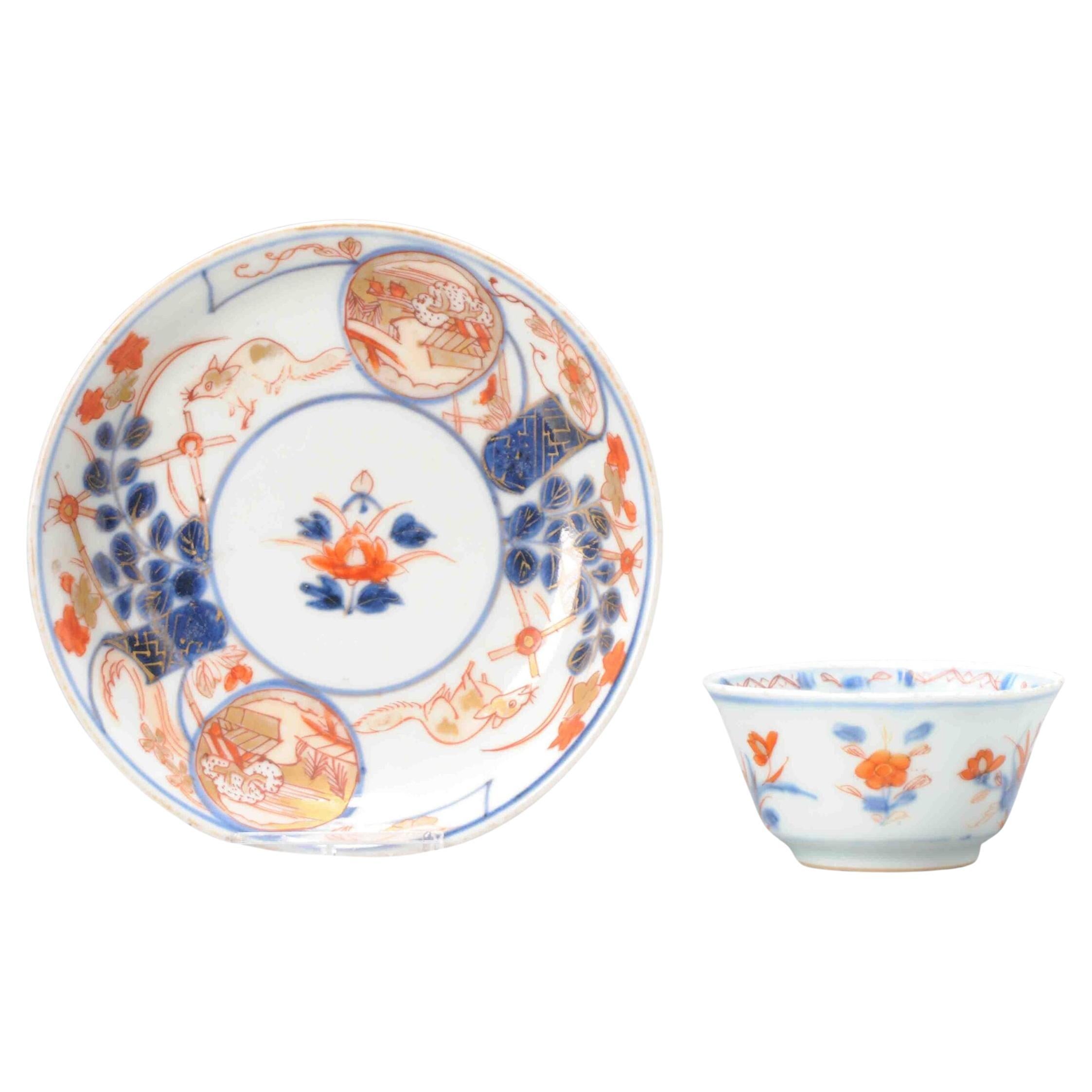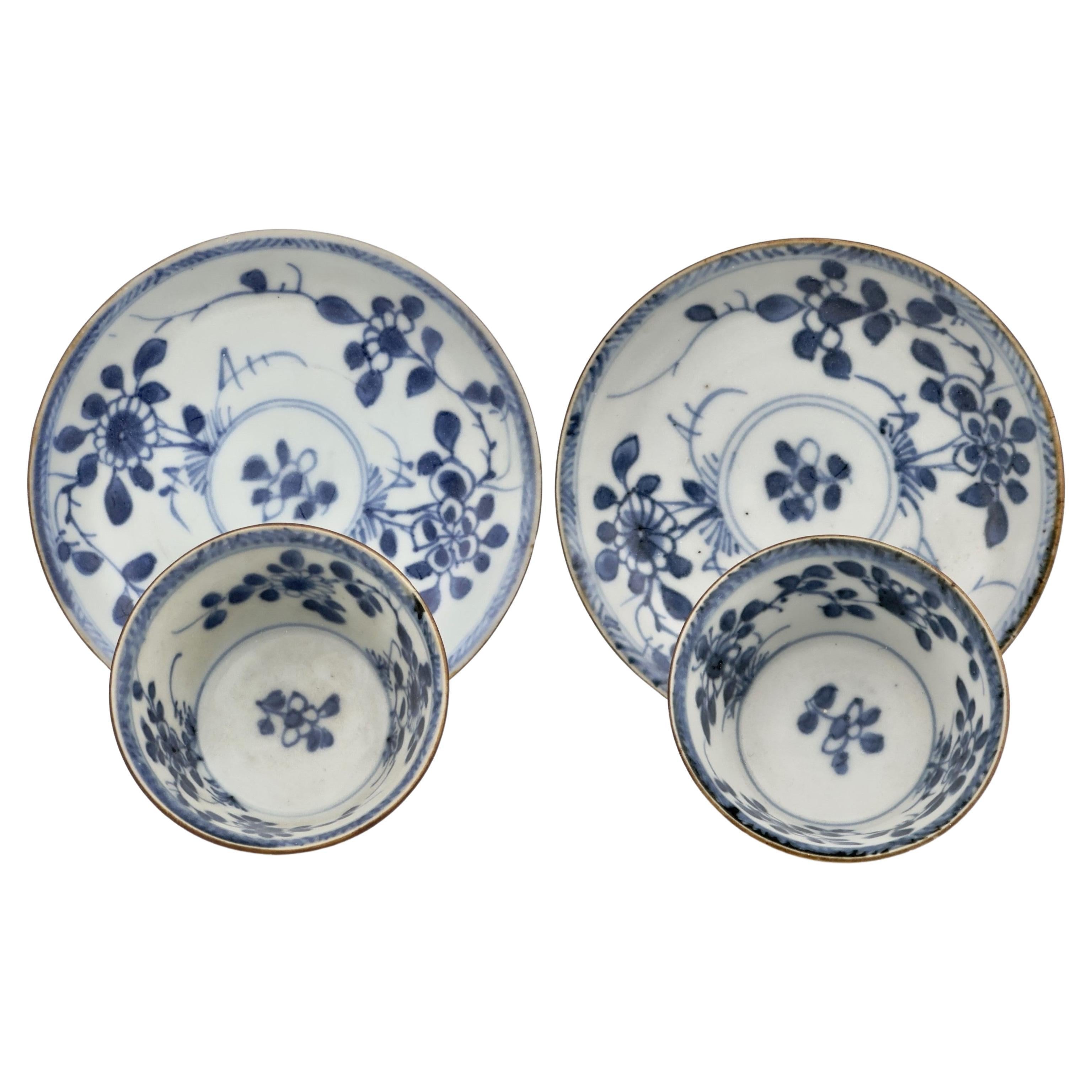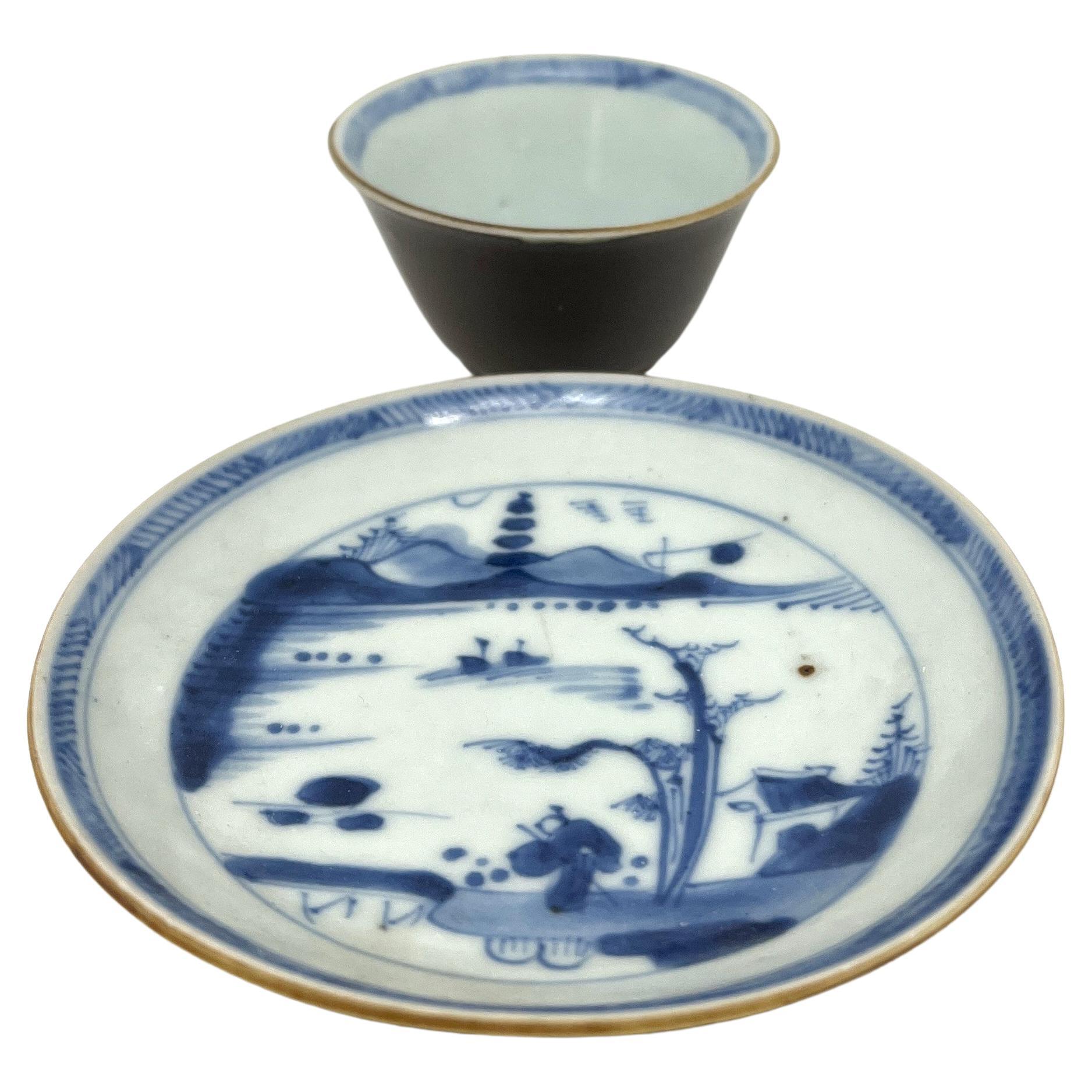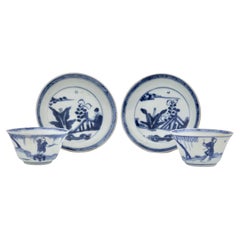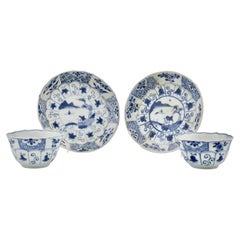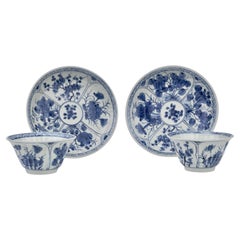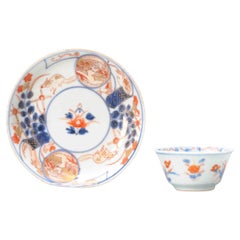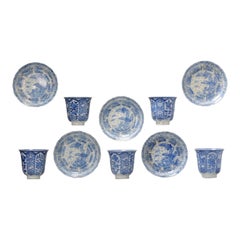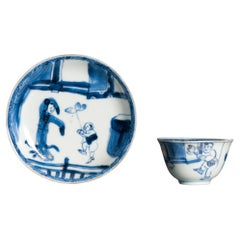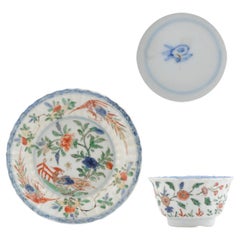Items Similar to Rare 'Imari Pavilion' Blue And White Tea Set C 1725, Qing Dynasty, Yongzheng Era
Want more images or videos?
Request additional images or videos from the seller
1 of 16
Rare 'Imari Pavilion' Blue And White Tea Set C 1725, Qing Dynasty, Yongzheng Era
$2,310per set
$3,300per set30% Off
£1,753.71per set
£2,505.30per set30% Off
€2,005.87per set
€2,865.53per set30% Off
CA$3,227.40per set
CA$4,610.58per set30% Off
A$3,589.58per set
A$5,127.97per set30% Off
CHF 1,874.37per set
CHF 2,677.67per set30% Off
MX$43,681.36per set
MX$62,401.94per set30% Off
NOK 23,938.52per set
NOK 34,197.89per set30% Off
SEK 22,450.11per set
SEK 32,071.58per set30% Off
DKK 14,970.60per set
DKK 21,386.57per set30% Off
Shipping
Retrieving quote...The 1stDibs Promise:
Authenticity Guarantee,
Money-Back Guarantee,
24-Hour Cancellation
About the Item
The "Imari Pavilion pattern" refers to a decoration pattern found on porcelains made during Early Qing Dynasty, influenced by Japanese Imari ware, which was produced in the Arita region of Japan. This tea set features elaborate depictions of traditional East Asian gardens and pavilions.
Period : Qing Dynasty, Yongzheng Period
Production Date : C 1725
Made in : Jingdezhen
Destination : Netherland
Found/Acquired : Southeast Asia , South China Sea, Ca Mau ship
Size : Right Teapot - 11cm (Height) / Dish - 16cm (Diameter)
Condition : Excellent
Reference : Double checked with reference to the original catalogues
1) Tau Co Ca Mau(The Ca Mau Shipwreck) Catalogue 2002 / The National Museum of Vietnamese History
2) THE CA MAU SHIPWRECK PORCELAIN : from the Collection of Dr.Zelnik , 2000
3) Sotheby’s Amsterdam, 2007 : Made In Imperial China / Sotheby's
4) Asian Ceramic Found along Maritime Silk Route / National Maritime Museum of Korea
* The Ca Mau Cargo
The Ca Mau Cargo refers to a Chinese cargo sunken sometime between 1723 and 1735 off the coast of Vietnam’s farthest point in the South China Sea, discovered by Vietnamese fishermen in 1998. It is believed the ship was a Chinese merchant’s cargo on its way from Canton (Guangzhou) to Batavia when it caught fire and sank. The merchant had ordered the goods on board for Dutch traders, who had limited access to China and its ports.
* Porcelain for the European Market
The Ca Mau Cargo consisted of numerous types of porcelain, chinaware and blue and white wares, all designed for the European market. Blue and white ceramics recovered from the cargo appear decorated with the so-called ‘Scheveningen landscape’, also known as ‘Deshima décor’. This motif usually depicted a traditional Dutch fishing village, executed in Chinese style. Chinese wares with Western motives were extremely popular and made to order and were known as ‘China de commande’.
- Dimensions:Height: 4.34 in (11 cm)Diameter: 6.3 in (16 cm)
- Sold As:Set of 5
- Style:Qing (Of the Period)
- Materials and Techniques:Ceramic,Glazed
- Place of Origin:
- Period:
- Date of Manufacture:Early 18th century
- Condition:Minor fading. Mild weathering from centuries underwater, but overall they are clean intact. Left Teabowl has minor crack on surface.
- Seller Location:seoul, KR
- Reference Number:1stDibs: LU9577243233092
About the Seller
4.8
Gold Seller
Premium sellers maintaining a 4.3+ rating and 24-hour response times
Established in 1999
1stDibs seller since 2023
38 sales on 1stDibs
Typical response time: <1 hour
- ShippingRetrieving quote...Shipping from: seoul, Korea South
- Return Policy
Authenticity Guarantee
In the unlikely event there’s an issue with an item’s authenticity, contact us within 1 year for a full refund. DetailsMoney-Back Guarantee
If your item is not as described, is damaged in transit, or does not arrive, contact us within 7 days for a full refund. Details24-Hour Cancellation
You have a 24-hour grace period in which to reconsider your purchase, with no questions asked.Vetted Professional Sellers
Our world-class sellers must adhere to strict standards for service and quality, maintaining the integrity of our listings.Price-Match Guarantee
If you find that a seller listed the same item for a lower price elsewhere, we’ll match it.Trusted Global Delivery
Our best-in-class carrier network provides specialized shipping options worldwide, including custom delivery.More From This Seller
View AllBlue and White Garden Pattern Tea Set c 1725, Qing Dynasty, Yongzheng Reign
Located in seoul, KR
The saucer set depicts botanical garden, motifs rich in symbolism within east asian culture. Each teabowl depicts scenes, characters and situations are richly depicted inside the sma...
Category
Antique 1720s Vietnamese Chinoiserie Tea Sets
Materials
Ceramic, Porcelain
Blue and white tea set c 1725, Qing dynasty, Yongzheng reign
Located in seoul, KR
The teabowl and saucer set depicts botanical elements and butterflies, motifs rich in symbolism within Chinese culture. Butterflies often represent transformation and immortality, wh...
Category
Antique 1720s Vietnamese Qing Tea Sets
Materials
Ceramic
Blue And White Flower Pattern Tea Set, Qing Dynasty, Kangxi Era
Located in seoul, KR
The teabowl and saucer set depicts flower elements. In particular, this set is relatively larger than other teacups set. And the crafting skill of setting each line is outstanding. There is a kangxi mark on the floor base.
Period : Qing Dynasty, Kangxi Period
Production Date : 1690-1699
Made in : Jingdezhen
Destination : Netherland
Found/Acquired : Southeast Asia , South China Sea, Vung Tau ship
Size : 14cm (Diameter) x 2.5cm(Height) - SAUCER / 9cm (Diameter) x 4.5cm(Height) - TEABOWL
Condition : Excellent
Reference : Double checked with reference to the original catalogues
1) Christies Amsterdam 1992 - Vung Tau Cargo...
Category
Antique 17th Century Vietnamese Qing Ceramics
Materials
Ceramic, Porcelain
$1,272 Sale Price
20% Off
Blue And White Flower Pattern Tea Set C 1725, Qing Dynasty, Yongzheng Era
Located in seoul, KR
They display central floral motifs surrounded by a variety of botanical patterns including branches and blooms, indicative of classic East Asian ceramic artistry.
Period : Qing Dyna...
Category
Antique 1720s Vietnamese Qing Tea Sets
Materials
Ceramic, Porcelain
Passing Boat and Bridge Pattern Tea Set, Circa 1725, Qing Dynasty, Yongzheng Era
Located in seoul, KR
With a medallion of two boats sailing together, passing an island on which a solitary figure stands by or on a bridge, the rim with a narrow heringbone pattern, the reverse glazed ca...
Category
Antique 1720s Vietnamese Qing Antiquities
Materials
Ceramic
$392 Sale Price / set
20% Off
Three Blue and White Teapots from Ca Mau Ship, C 1725, Qing Dynasty, Yongzheng E
Located in seoul, KR
The pieces are adorned with intricate motifs and scenes that may represent traditional Chinese landscapes, daily life, or historical tales.
Period : Qing Dynasty, Yongzheng Period
P...
Category
Antique 1720s Vietnamese Qing Antiquities
Materials
Ceramic, Porcelain
$1,112 Sale Price
20% Off
You May Also Like
Antique Japanese Chinese Edo Kangxi Period Imari Porcelain Tea Set, 18th Century
Located in Amsterdam, Noord Holland
Nice edo/kangxi period tea bowl and saucer with imari floral and animal decoration. Its a marriage, combination between 2 sets.
Additional information:
Material: Porcelain & Pottery...
Category
Antique 18th Century Japanese Edo Tea Sets
Materials
Porcelain
$198 Sale Price / set
20% Off
Antique Japanese Kangxi Revival Set Chinese Porcelain Tea Cups Japan, 19th C
Located in Amsterdam, Noord Holland
Delicate and trademark Kangxi revival Japanese Tea Set from the 19th century. Marked Zoshuntei Sanpo Sei/ Yu mark and with a high quality floral scene...
Category
Antique 19th Century Japanese Tea Sets
Materials
Porcelain
$1,998 Sale Price / set
20% Off
Antique Kangxi Period Thinly potted Chinese porcelain Tea Set Figural Pagode
Located in Amsterdam, Noord Holland
Sharing with you this lovely tea set in Blue and white. Very thinly potted porcelain, the light shines trough.
Kangxi period pieces in underglaze blue. Both with a pagode scene with ...
Category
Antique 17th Century Chinese Qing Ceramics
Materials
Porcelain
Antique Kangxi Chinese Famille Verte Tea Set Top, 18th Century
Located in Amsterdam, Noord Holland
Kangxi period, Famille Verte. Stunning scene Rare set with floral and bird scene.
The cup with an unusual Hare Mark.
Chinese café au lait porcelain is a type of Chinese porcelain t...
Category
Antique 18th Century Chinese Qing Tea Sets
Materials
Porcelain
$1,819 Sale Price / set
20% Off
Collection of Three Chinese Porcelain Blue & White Tea Pots
Located in Sheffield, MA
Collection of 3 Chinese Export Porcelain blue & white tea pots. Treat yourself to a cup of tea or serve a guest with individual teapot or use them as dec...
Category
20th Century Chinese Chinese Export Tea Sets
Materials
Porcelain
$360 Sale Price / set
20% Off
9 Pc, 18th C. Chinese Export "Fitzhugh Gold" Blue & White Porcelain Coffee Set
Located in Atlanta, GA
Chinese, 18th century.
A nine peice grouping of Chinese export porcelain for the American or European market in the famous "Fitzhugh Gold" pattern. The Fitzhugh pattern is named after Englishman Thomas Fitzhugh who was the director of the British East India Company...
Category
Antique 18th Century Chinese Chinese Export Ceramics
Materials
Porcelain
$1,996 Sale Price / set
20% Off
More Ways To Browse
Blue And White Imari
Sothebys Catalogues
Japanese Blue And White Ceramic
Shipwreck Antique
Qing Dynasty Imperial
Imperial Furniture Co
Korean Blue And White
Korean White Porcelain
Canton Blue And White
Antique Korean Porcelain
Chinese Arita China
Garden Pavilion
18th Century Teapot
Canton Porcelain Blue
Sothebys 2000
Rare Antique Teapots
Cargo Porcelain
Imari Pattern China
